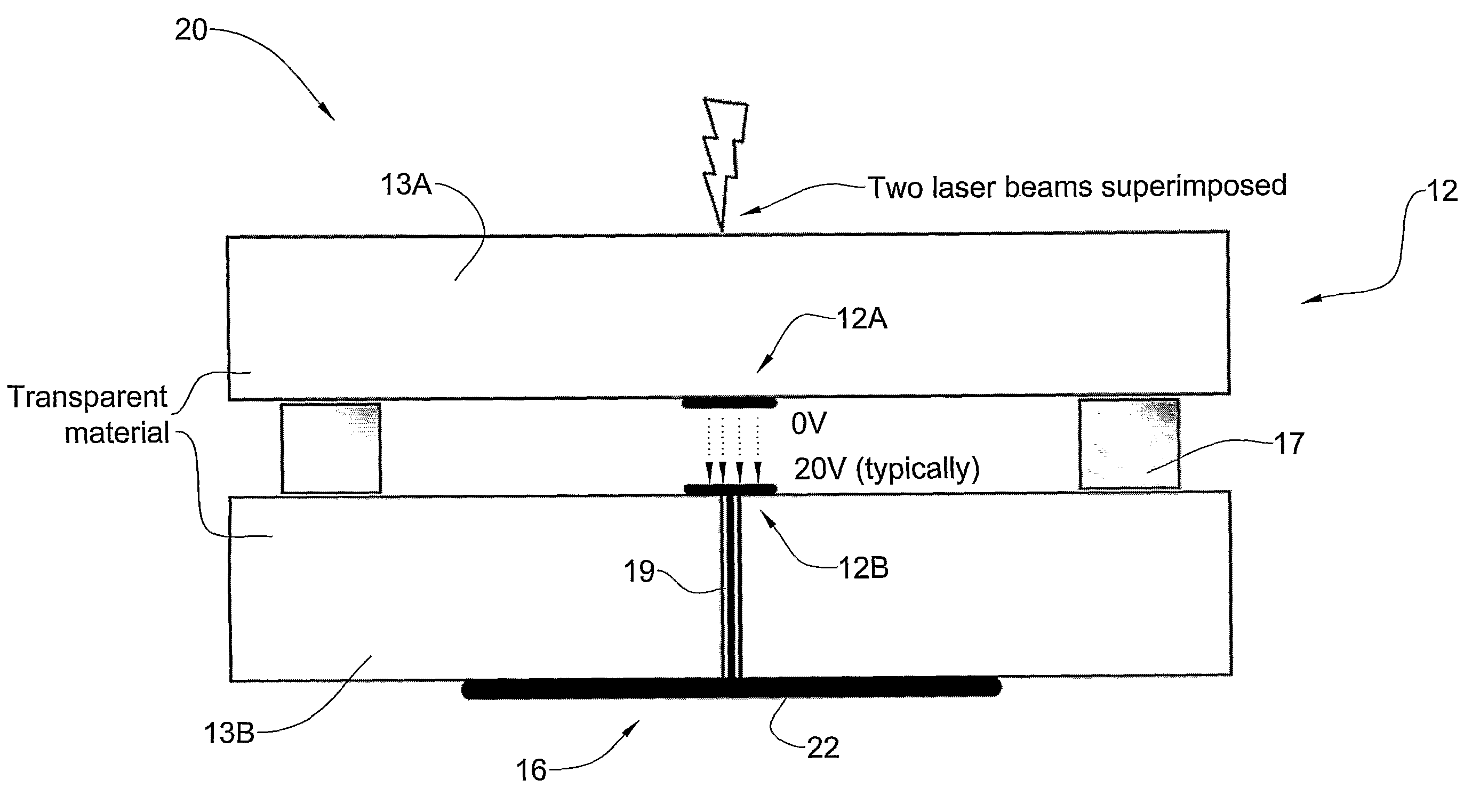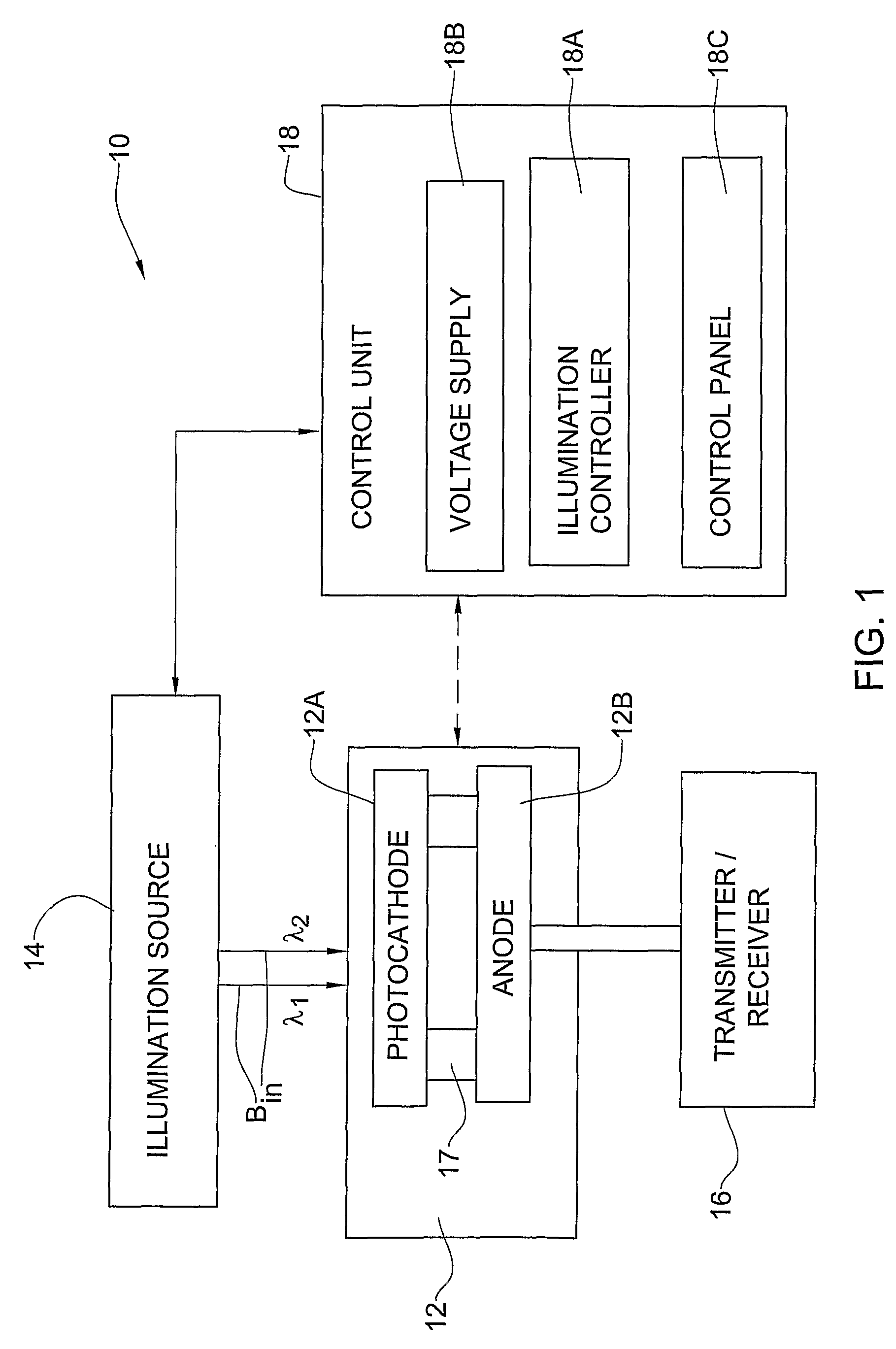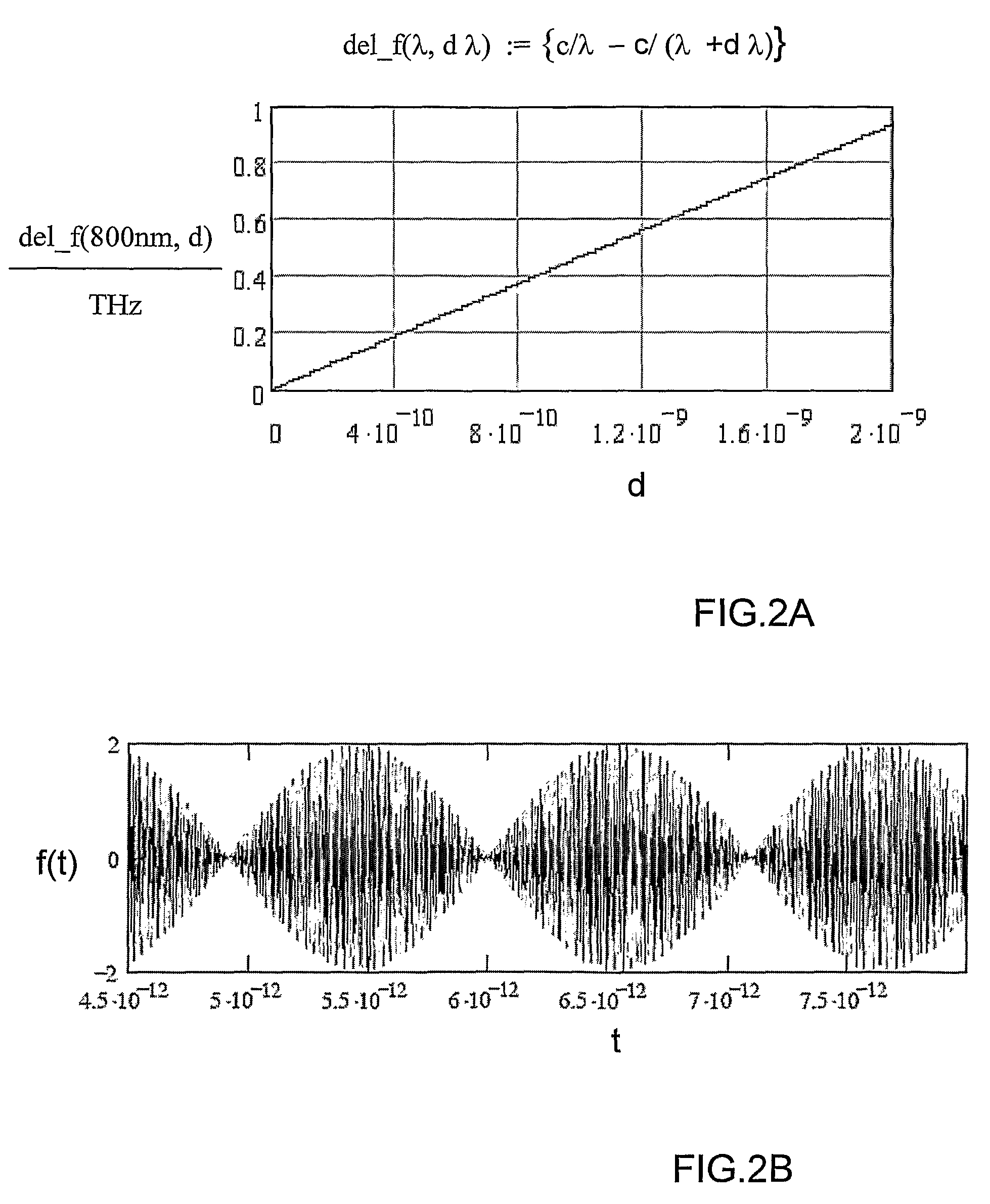Electron emission device of high current density and high operational frequency
a technology of electron emission device and high current density, applied in semiconductor lasers, discharge tube main electrodes, instruments, etc., can solve problems such as excess or shortage of cs, and limit on current density
- Summary
- Abstract
- Description
- Claims
- Application Information
AI Technical Summary
Benefits of technology
Problems solved by technology
Method used
Image
Examples
Embodiment Construction
[0048]Referring to FIG. 1, there is exemplified an electronic system, generally at 10, according to the invented technique. The system 10 includes a photoemission based electric device 12 (diode or triode), an illumination source 14, and a transmitter / receiver unit 16. The system is typically associated with a control unit 18, which includes inter alia an illumination controller 18A for controlling the operation of the illumination source 14 and in some embodiments of the invention includes a voltage supply unit 18B for controlling electrical conditions of the electronic device 12, and may also include an appropriate control panel 18C.
[0049]In the present example, the electric device 12 is configured as a diode including a photocathode 12A exposed to illumination from said illumination source 14, and an anode 12B spaced from the photocathode a predetermined distance. The photocathode may be made of any suitable material, selected in accordance with the wavelength of light used, e.g....
PUM
 Login to View More
Login to View More Abstract
Description
Claims
Application Information
 Login to View More
Login to View More - R&D
- Intellectual Property
- Life Sciences
- Materials
- Tech Scout
- Unparalleled Data Quality
- Higher Quality Content
- 60% Fewer Hallucinations
Browse by: Latest US Patents, China's latest patents, Technical Efficacy Thesaurus, Application Domain, Technology Topic, Popular Technical Reports.
© 2025 PatSnap. All rights reserved.Legal|Privacy policy|Modern Slavery Act Transparency Statement|Sitemap|About US| Contact US: help@patsnap.com



